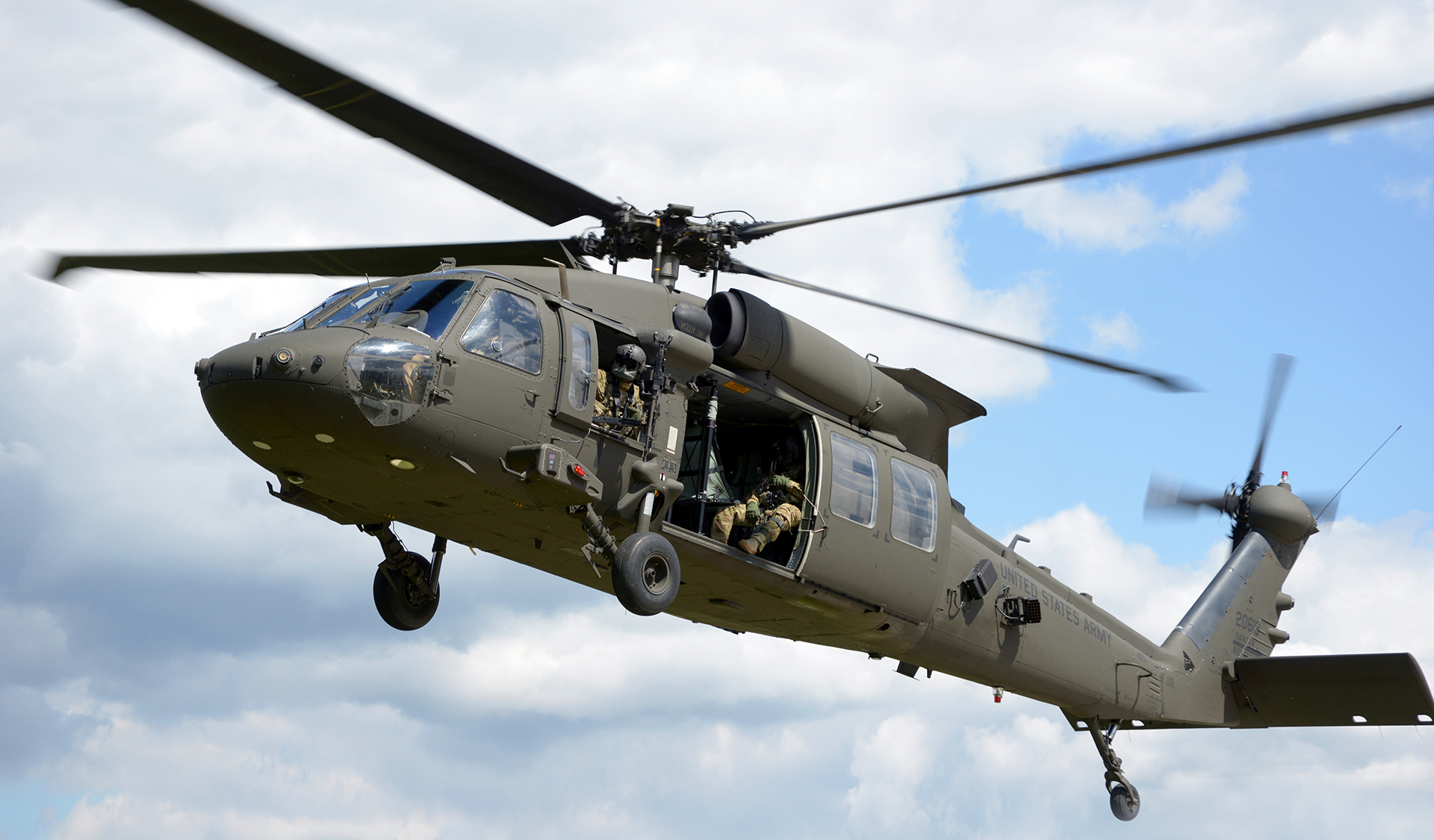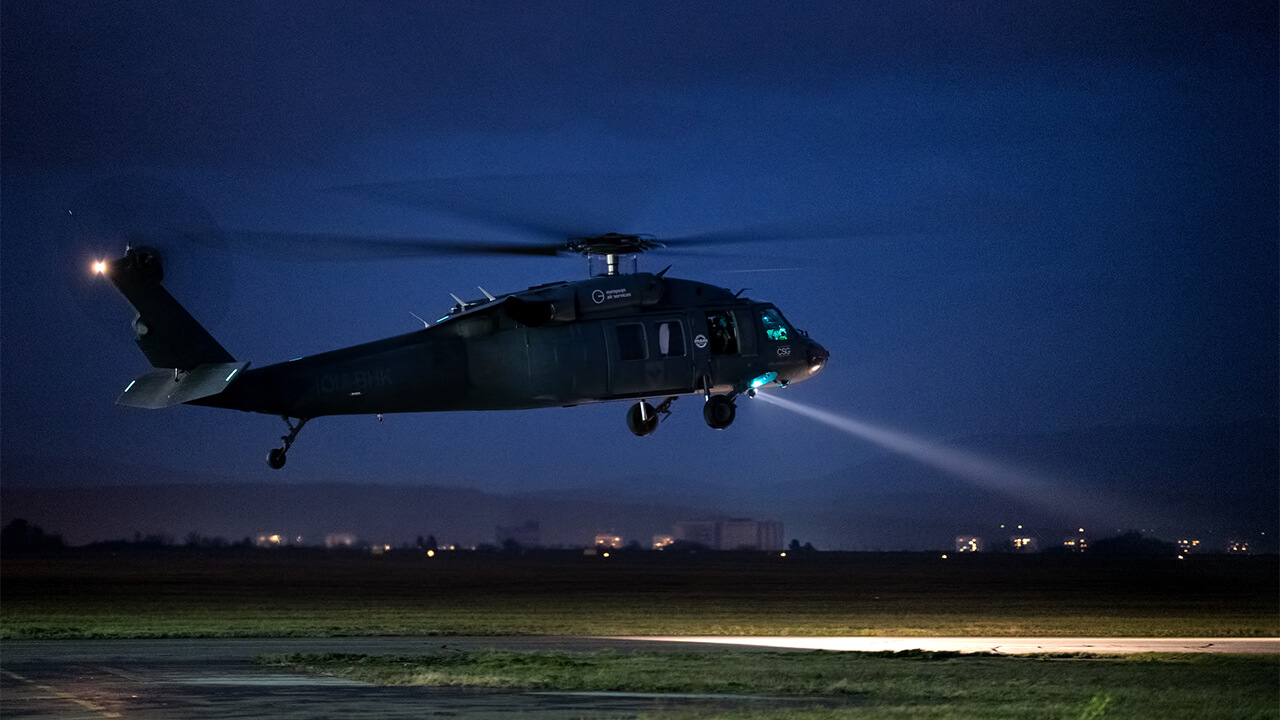Every Little Thing You Need to Understand About the UH 60 Helicopter
The UH-60 helicopter, a keystone of U.S. Military aviation because its launching in 1979, stands for an impressive blend of engineering and operational convenience. Recognized for its exceptional speed and range, the UH-60 has actually been adjusted for various missions, from army transport to clinical discharge. As armed forces demands develop, so also does the helicopter, with ongoing improvements focused on boosting its capabilities and integrating modern-day technologies. To completely value the value of the UH-60 in contemporary army procedures, one should consider its history, style, and the future advancements that could redefine its role.
History of the UH-60
Created in the late 1970s, the UH-60 Black Hawk helicopter became a feedback to the united state Army's requirement for a functional utility helicopter that can do a variety of missions under difficult conditions. The motivation for its layout was the shortcomings identified in the earlier helicopters used throughout the Vietnam Battle, specifically in regards to rate, ability to move, and survivability.
The Black Hawk was developed by Sikorsky Aircraft, incorporating advanced innovations and materials to enhance its performance and durability. It was formally presented right into service in 1979, swiftly becoming a vital asset for army operations - uh 60. Its capacity to transport troops, clinical evacuation, and logistical support in both fight and humanitarian goals made the Black Hawk an important part of the united state Military's aviation fleet
Throughout the years, the UH-60 has been constantly upgraded, adjusting to the transforming nature of war and the evolving needs of modern-day armed forces procedures. Its operational background includes engagement in major conflicts, peacekeeping goals, and calamity relief efforts, strengthening its online reputation as a reliable and reliable helicopter in numerous environments worldwide.

Design and Specifications
The design of the UH-60 Black Hawk helicopter consistently mirrors a dedication to operational performance and flexibility. Created by Sikorsky Aircraft, this medium-lift utility helicopter features a streamlined, aerodynamic body that improves rate and maneuverability. Its tandem blades system, identified by two counter-rotating blades, lessens resonance and raises lift capacity, enabling much safer procedures in varied settings.
The UH-60 is powered by two T700-GE-701C turboshaft engines, giving a maximum rate of approximately 180 knots and a variety of around 400 maritime miles. Its robust airframe is constructed from advanced composite products, making certain toughness while keeping a relatively reduced weight. The helicopter has a maximum gross weight of concerning 22,000 extra pounds, sustaining a functional haul arrangement.

Goals and duties
A functional system, the UH-60 Black Hawk helicopter serves a multitude of roles and objectives within army procedures. Made mainly for army transportation, it can carrying as much as 11 soldiers, making it an important property for quick deployment and logistical assistance.
In addition to army transportation, the UH-60 stands out in clinical evacuation (MEDEVAC) objectives, outfitted with advanced clinical devices to provide important treatment throughout transportation. Its ability to operate in varied atmospheres enhances its performance in battle search and rescue (CSAR) procedures, where swift removal of personnel is important.
The helicopter likewise plays a substantial duty in reconnaissance and surveillance objectives, using onboard sensors and devices to debrief. Moreover, its convenience expands to logistical assistance, qualified of transporting supplies and equipment to forward operating bases - uh 60.
In fight procedures, the UH-60 can be equipped with different weapon systems, enabling it to provide close air assistance. Its multi-role capacity makes the Black Hawk an important tool for modern-day military pressures, adjusting seamlessly to the progressing demands of battlefield circumstances and guaranteeing goal success across a variety of functional contexts.
Efficiency and Capabilities
Understood for its robust efficiency, the UH-60 Black Hawk helicopter flaunts excellent abilities that more info here boost its functional effectiveness across different missions. uh 60. This multi-role aircraft is outfitted with powerful twin-engine Turbomeca Arriel 1D1 engines, giving phenomenal speed and maneuverability, with an optimum cruise rate of around 150 knots and a functional series of around 400 maritime miles
The Black Hawk's innovative visit here avionics and fly-by-wire control systems substantially enhance flight security and handling, allowing it to operate in varied environments, including adverse weather problems. Its flexibility is more exemplified by its capacity to lug approximately 11 completely outfitted troops or a haul of approximately 8,000 pounds, making it optimal for army transportation, medical evacuation, and logistical assistance missions.
Additionally, the UH-60 is made for survivability, including enhanced airframes, ballistic security for staff and passengers, and advanced countermeasure systems to escape dangers. The helicopter's dexterity and rate, incorporated with its capacity for quick deployment, make it an essential property in modern military procedures, making certain that it continues to be a vital component of tactical air assistance and battlefield movement.
Future Developments

One considerable emphasis is the assimilation of innovative avionics systems, which will certainly enhance situational recognition through improved navigation and interaction capabilities. This includes the possible use of fabricated intelligence to aid pilots in decision-making and goal planning.
Additionally, future versions may integrate sophisticated products and layout functions to boost the helicopter's durability and minimize its radar trademark, boosting survivability in disputed atmospheres.
The intro of hybrid-electric propulsion systems about his is additionally on the perspective, intending to boost gas efficiency and reduce logistical problems. Such improvements could extend functional range and lower the helicopter's environmental impact.

Conclusion
The UH-60 helicopter stands for a significant development in military air travel given that its introduction in 1979. Its durable layout, versatile capacities, and continuous upgrades ensure its relevance in numerous functional duties, including army transportation and clinical emptying. As innovation advances, future developments will likely boost its performance with the assimilation of fabricated knowledge and hybrid-electric systems. The UH-60's enduring visibility underscores its crucial duty in contemporary army operations and highlights the recurring advancement of military aeronautics innovation.
The UH-60 helicopter, a foundation of U.S. Army aviation given that its debut in 1979, represents an exceptional blend of design and functional adaptability. As armed forces requirements progress, so as well does the helicopter, with continuous improvements aimed at boosting its capabilities and integrating contemporary innovations.The style of the UH-60 Black Hawk helicopter regularly shows a dedication to operational efficiency and versatility. Developed by Sikorsky Aircraft, this medium-lift energy helicopter includes a smooth, aerodynamic body that improves speed and maneuverability.The UH-60 helicopter stands for a considerable improvement in armed forces aeronautics because its introduction in 1979.